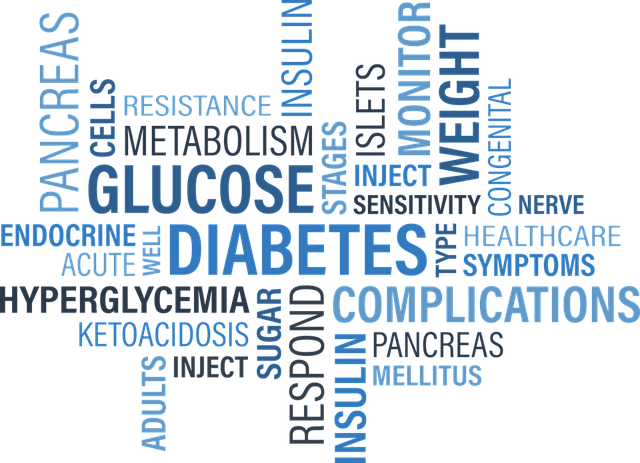Diabetes is a chronic condition that causes glucose levels to spike, and other health problems to occur as a result. Glucose or blood sugar levels are controlled by insulin, a hormone produced in the pancreas that transports glucose to cells. When the pancreas fails to produce enough insulin or stops producing it altogether, excess glucose accumulates in the blood and cannot reach cells.
There are several risk factors for diabetes that have to do with genetics, age, ethnic background, medical history, and lifestyle. People with a family history of diabetes are more predisposed to having diabetic symptoms at a certain age in adulthood. People with alcohol use disorders are at higher risk of developing diabetic symptoms, or their symptoms are exacerbated by excessive alcohol intake.
Other risk factors of diabetes include:
- obesity
- sedentary lifestyle
- poor diet
- hypothyroidism
- emotional stress
- insulin resistance
- pancreatic disease
- high cholesterol
- high blood pressure
The three most common types of diabetes are type 1, type 2, and gestational. Type 1 is an autoimmune disease, type 2 is insulin resistance, and gestational is caused by pregnancy hormones.
Being able to recognize the signs and symptoms of diabetes is the first step toward getting the condition diagnosed, and treating the specific type of diabetes.
Although there are some common symptoms of all diabetic conditions, each type of diabetes comes with its own unique symptoms and timeline of symptomatology.

Here are the top 12 signs of diabetes to be aware of:
- Frequent urination
- Increased thirst
- Unintentional weight loss
- Numbness or tingling in extremities
- Blurry vision
- Dry skin
- Chronic fatigue
- Frequent or chronic infections
- Slow healing wounds
Type 1 Diabetes Symptoms and Treatment
The onset of type 1 diabetes symptoms is more sudden than the other types. It is common for people to start experiencing symptoms following a viral illness such as the flu, pneumonia, or Covid, and mistake their symptoms for residual effects of the virus.
Diabetic ketoacidosis or DKA may be one of the signs of type 1 diabetes. Lack of insulin causes a build-up of ketones in blood and urine, causing hyperglycemia, or high blood sugar. Symptoms of DKA include a fruity breath odor, sudden weight loss, respiratory issues, nausea, vomiting, and other gastrointestinal issues.
Untreated DKA is a medical emergency that can result in unconsciousness and even death, especially in children. If these symptoms are present, it is critical to get blood sugar levels tested as soon as possible to rule out any other possible conditions and get a diagnosis. In adults, type 1 can be misdiagnosed as type 2 diabetes.
Type 2 Diabetes Symptoms and Treatment
The symptoms of type 2 diabetes can take a long time to develop and may go unnoticed and undiagnosed for years. About 90% of diabetes cases are type 2. The chronic condition of high blood sugar levels can cause complications in circulation, the nervous system, and the immune system.
Type 2 is known as adult-onset diabetes, and although it is not uncommon for symptoms to present early on in childhood, the risks of having it increase with age. This type is caused by insulin resistance, when the pancreas cannot produce enough insulin and too much glucose circulates in the bloodstream.
In addition to the 12 common diabetes symptoms, type 2 also causes:
- increased hunger
- headaches
- loss of consciousness
- gum inflammation and dental issues
- high blood pressure
- neuropathy (nerve damage)
- kidney issues
- impaired hearing
- skin conditions
- allergic reactions
- vision problems
Type 2 diabetes is typically diagnosed with a glycated hemoglobin test or A1C, followed by routine blood sugar screenings. Lifestyle changes such as a healthier diet and regular exercise are recommended for managing the symptoms. Insulin therapy and diabetes medications may also be prescribed to keep blood sugar levels from spiking.
Gestational Diabetes Symptoms And Treatment
Gestational diabetes only occurs during pregnancy and is caused by pregnancy hormones produced in the placenta that cause the mother’s blood sugar levels to surge. As a result, the fetus can also have high blood sugar, which can cause complications.
There are often no symptoms of gestational diabetes, but it can cause growth and developmental issues in infants whose mothers are affected by it. If there are symptoms, they are often mild and develop gradually.
Warning signs of gestational diabetes in pregnant women are similar to the common symptoms of type 1 and type 2. All women are routinely tested for abnormal glucose levels somewhere between 24 and 28 weeks of pregnancy. Gestational diabetes diagnoses are treated with frequent monitoring of blood sugar levels and a strict diet.
How to Manage Diabetic Symptoms
Once diagnosed, diabetes cannot be cured as it is a life-long and chronic condition, but symptoms can be monitored and managed. Maintaining a healthy weight, eating a highly nutritious diet, avoiding high-sugar foods and drinks such as alcohol, and incorporating regular exercise can all help to keep blood sugar levels in balance. Symptom management can also help to prevent further health issues from occurring.























